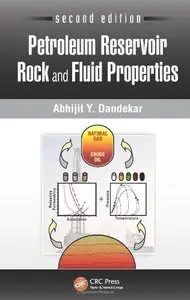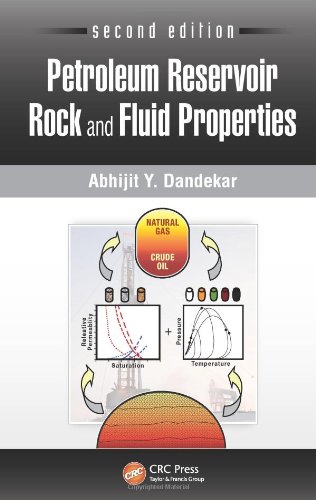Abhijit Y. Dandekar, "Petroleum Reservoir Rock and Fluid Properties, Second Edition"
2013 | ISBN-10: 1439876363 | 544 pages | PDF | 11 MB
2013 | ISBN-10: 1439876363 | 544 pages | PDF | 11 MB
A strong foundation in reservoir rock and fluid properties is the backbone of almost all the activities in the petroleum industry. Suitable for undergraduate students in petroleum engineering, Petroleum Reservoir Rock and Fluid Properties, Second Edition offers a well-balanced, in-depth treatment of the fundamental concepts and practical aspects that encompass this vast discipline.
New to the Second Edition
Introductions to Stone II three-phase relative permeability model and unconventional oil and gas resources
Discussions on low salinity water injection, saturated reservoirs and production trends of five reservoir fluids, impact of mud filtrate invasion and heavy organics on samples, and flow assurance problems due to solid components of petroleum
Better plots for determining oil and water Corey exponents from relative permeability data
Inclusion of Rachford-Rice flash function, Plateau equation, and skin effect
Improved introduction to reservoir rock and fluid properties
Practice problems covering porosity, combined matrix-channel and matrix-fracture permeability, radial flow equations, drilling muds on fluid saturation, wettability concepts, three-phase oil relative permeability, petroleum reservoir fluids, various phase behavior concepts, phase behavior of five reservoir fluids, and recombined fluid composition
Detailed solved examples on absolute permeability, live reservoir fluid composition, true boiling point extended plus fractions properties, viscosity based on compositional data, and gas-liquid surface tension
Accessible to anyone with an engineering background, the text reveals the importance of understanding rock and fluid properties in petroleum engineering. Key literature references, mathematical expressions, and laboratory measurement techniques illustrate the correlations and influence between the various properties. Explaining how to acquire accurate and reliable data, the author describes coring and fluid sampling methods, issues related to handling samples for core analyses, and PVT studies. He also highlights core and phase behavior analysis using laboratory tests and calculations to elucidate a wide range of properties.



